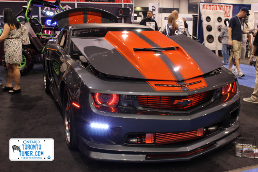2012 - GT-R review
So as we all know the Nissan Skyline has been famous for running much more powerful vehicles to the ground and has also gone had in had with Paul Walker (Brian O'Conner) from Fast & Furious. Ever since I first got my initial glimpse into Car and Model and saw their review of a modded Skyline R34 in Japan, I was hooked.
One of the largest problems for tuners and the general public in Canada was that the only way you could obtain anything close to a "Skyline" was if it is 10 years into production or older. Meaning best you could get was a 1992 Skyline in 2002 (insert sad face here...) Nissan saw the potential of buyers in Canada as well as the US and came out with the GTR (which is a Skyline R35 in Japan). Name was changed for "legal intercontinental issues" as I have been told by a few of the techs I know at the local dealerships.
The 2009 GTR (codenamed R35) carried a great list of "goodies" that made it much more superior than the previous model. Among them is a 473-horsepower twin-turbocharged V6, a thoroughly revised version of the previous GT-R's ATTESA ET-S all-wheel-drive system, a trick suspension with adjustable dampers and a dual-clutch transmission that ranks right up there with the best in the business.
-
BMW M3
-
Camaro
-
Aftermath (Sample Video)
Credit also goes to the GT-R's all-new PM (Premium Midship) chassis, as distinguished from the FM platform that underpins the 350Z and the Infiniti G35. The GT-R's 53/47 weight distribution (50/50 under full acceleration, Nissan says) is due in part to the PM chassis' rear-mounted transmission, unusual in any case for a front-engine design -- only the Corvette and a few other high-end performance cars have one -- but unprecedented for one with all-wheel drive. What's more, to guard against inconsistencies from one GT-R to the next, the car's suspension and body are assembled on a jig, racecar style. The result is an honest-to-goodness supercar status for a price that is way below the supercar budget.
How can Nissan do any better you ask? Under the new GT-R's hood is the same VR38DETT 3.8-liter twin-turbocharged V-6 as before, but output has been increased from 485 bhp to a whopping 530 bhp, while torque gets raised from 434 lb.-ft. to 448. Mizuno attained these new figures by elevating boost pressure of the turbocharger from 0.75 bar to 0.90 bar, tweaking the engine's valve-timing system and altering the air/fuel ratio. He also improved breathing by enlarging the inlet pipe diameter and a section of exhaust pipe.
These changes are all evident upon flooring the throttle pedal for the first time. The first thing you notice is the sound: a decidedly more sinister growl emanates from within the engine compartment. Then you feel the g forces pressing you into the seat as the car snaps off the line. Part of the credit here goes to the gearbox's VDC-R mode, which has been modified to provide ideal launches without putting unnecessary stress on the transmission. Depress both the brake pedal and throttle pedal simultaneously, then let off the brakes—the new 2012 GT-R snaps off the line at an ideal 4000 rpm. Once under way, you seem to enter warp speed, as the 3965-lb. car hits 60 mph in 2.85 seconds, a figure we round up to 2.9. The quarter-mile mark comes and goes in a phenomenal 11.1 seconds... this is drag-car country.
The extra power isn't the only thing responsible for the car's enhanced acceleration; the new GT-R's aerodynamics are also significantly improved. The coefficient of drag has been improved from 0.27 to 0.26, meaning the GT-R now slices through the air with less resistance. What's more amazing is this: The car also has 10 percent more downforce. Mizuno-san worked this magic by cleverly routing more air to the sides of the car instead of over the top. Also, airflow has been increased to the radiator and front brakes via a larger grille and vents. The aerodynamic improvements, combined with those to the engine, have resulted in improved fuel economy figures as well (16/23 city/highway; the previous GT-R was rated at 15/21).
Stopping power is again provided by Brembo monoblock 6-piston front and 4-piston rear brakes. Enlarged front rotors (15.4-in. versus last year's 15.0s) team with 15.0-in. rears, both two-piece full-floating (and cross-drilled) designs with low-steel high-stiffness brake pads. The calipers utilize racing-style radial mounting to minimize caliper flex during extreme braking. The GT-R stops exceptionally well, coming to a complete halt from 60 mph and 80 mph in 114 ft. and 189 ft., respectively.
Just when you thought this was all - AMS out of Illinois decided to "tweak" the R35 into a monster than can do quarter mile times of under 9 sec at nearly 170MPH!!
by Ivan Dancevski.





